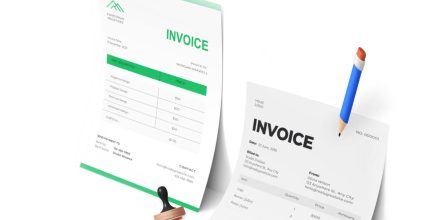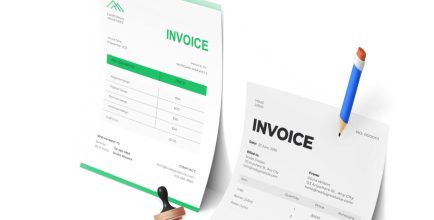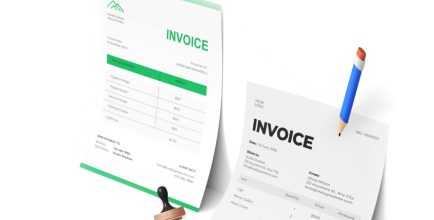The Significance of the Current Ratio
The current ratio, a key indicator among various liquidity ratios, plays an essential role in assessing a business’s short-term liquidity. This ratio focuses on a company’s capability to fulfill its short-term obligations with its assets that are readily convertible to cash. Short-term commitments are those expected to be settled within one year, including but not limited to short-term bank loans, accounts payable, lease payments, and wages.
Also known as the working capital ratio, the current ratio evaluates whether a firm’s current assets are sufficient to cover its current liabilities. A higher current ratio signifies a stronger position in terms of short-term financial health. A ratio of 1 to 1 means the company possesses enough current assets to meet its short-term liabilities without liquidating fixed assets. Conversely, a ratio below 1 suggests that a company may struggle to cover its short-term liabilities.
How the Current Ratio Functions
The current ratio works by comparing a company’s current assets against its current liabilities. Specifically, current assets refer to resources that can be transformed into cash within a one-year period. Utilizing the current ratio allows a business to gauge its ability to fulfill immediate financial commitments using these liquid assets.
This analysis is critical as it determines whether a company can meet its short-term debts without the necessity to liquidate non-current assets or seek additional financing. This ratio, therefore, serves as a snapshot of the company’s liquidity and operational efficiency in handling its short-term obligations.
Understanding Current Assets
Current assets encompass those items on a company’s balance sheet that are expected to be converted into cash or used up within one year. These assets are crucial for maintaining liquidity and include not just cash itself but also other assets that are readily convertible to cash. Critical components of current assets include:
- Cash and Cash Equivalents: This category covers all forms of liquid capital, whether held in bank accounts (checking or savings) or in physical form (coins, currency, bank drafts, or money orders). Cash equivalents refer to short-term, highly liquid investments that are quickly convertible into known amounts of cash, such as short-term government bonds or marketable securities.
- Accounts Receivable: Money owed to the company by its customers for goods or services delivered on credit. This is considered a current asset because it is expected to be settled within a one-year period.
- Inventory: Comprises goods and materials held by a company for the purpose of resale, including both finished products and raw materials awaiting production. The inventory is classified under current assets since these items are typically sold within the business cycle of one year.
Non-current or fixed assets, on the other hand, include long-term investments and property (such as buildings, land, equipment, and vehicles) that cannot be converted into cash within the one-year timeframe. These are essential for the business’s long-term operations but do not directly contribute to short-term liquidity as current assets do.
Defining Current Liabilities
Current liabilities represent the debts or financial obligations a business must settle within a year or within its operating cycle, whichever is longer. These obligations are crucial for understanding a company’s immediate financial health and liquidity. The types of current liabilities include, but are not limited to, accounts payable, various taxes (such as income, sales, and payroll taxes), short-term loans, and the current portion of long-term debt. Specifically:
- Accounts Payable: Short-term debts owed to suppliers, creditors, and vendors for goods and services received but not yet paid for.
- Taxes: The range of taxes a company is obligated to pay within the year, including sales taxes, income taxes, and payroll taxes.
- Payroll: All amounts due to employees, encompassing salaries, wages, bonuses, and commissions.
- Loans: This includes any short-term borrowing and interest payments on long-term debts that are due within the current year.
In contrast, liabilities not classified as current include long-term financial commitments that aren’t due within the business’s current operating cycle. This category may encompass:
- Commercial Loans: Loans with a repayment period extending beyond one year.
- Mortgages: While the interest portions may be considered current, the principal amounts of mortgages are long-term liabilities.
- Debentures: A form of long-term loans issued by companies and governments, which do not fall into the current liabilities unless they are due within the year.
Understanding these distinctions is vital for accurate financial analysis and planning, providing a clear picture of how efficiently a business can meet its short-term financial commitments.
Ideal Range for the Current Ratio
Determining an optimal current ratio isn’t straightforward, primarily because it depends on the industry within which a business operates. The definition of a “good” current ratio can significantly vary, reflecting diverse operational needs and financial pressures across sectors. Consequently, companies often aim for a target range rather than a specific figure, recognizing the dynamic nature of financial operations. Assets and liabilities fluctuate regularly due to routine business transactions, including asset liquidation, debt payments, and income generation.
Commonly, a current ratio falling between 1.2:1 and 2:1 is perceived as a hallmark of financial stability. Such a range indicates not only the company’s capability to cover its short-term obligations but also its efficiency in capital utilization for growth and investment. Ratios exceeding 2:1, however, imply an underutilization of short-term assets, suggesting a potential area for strategic improvement. Although this scenario is generally more manageable than a ratio below 1:1, which signals substantial financial distress, it still raises concerns about optimal resource allocation.



